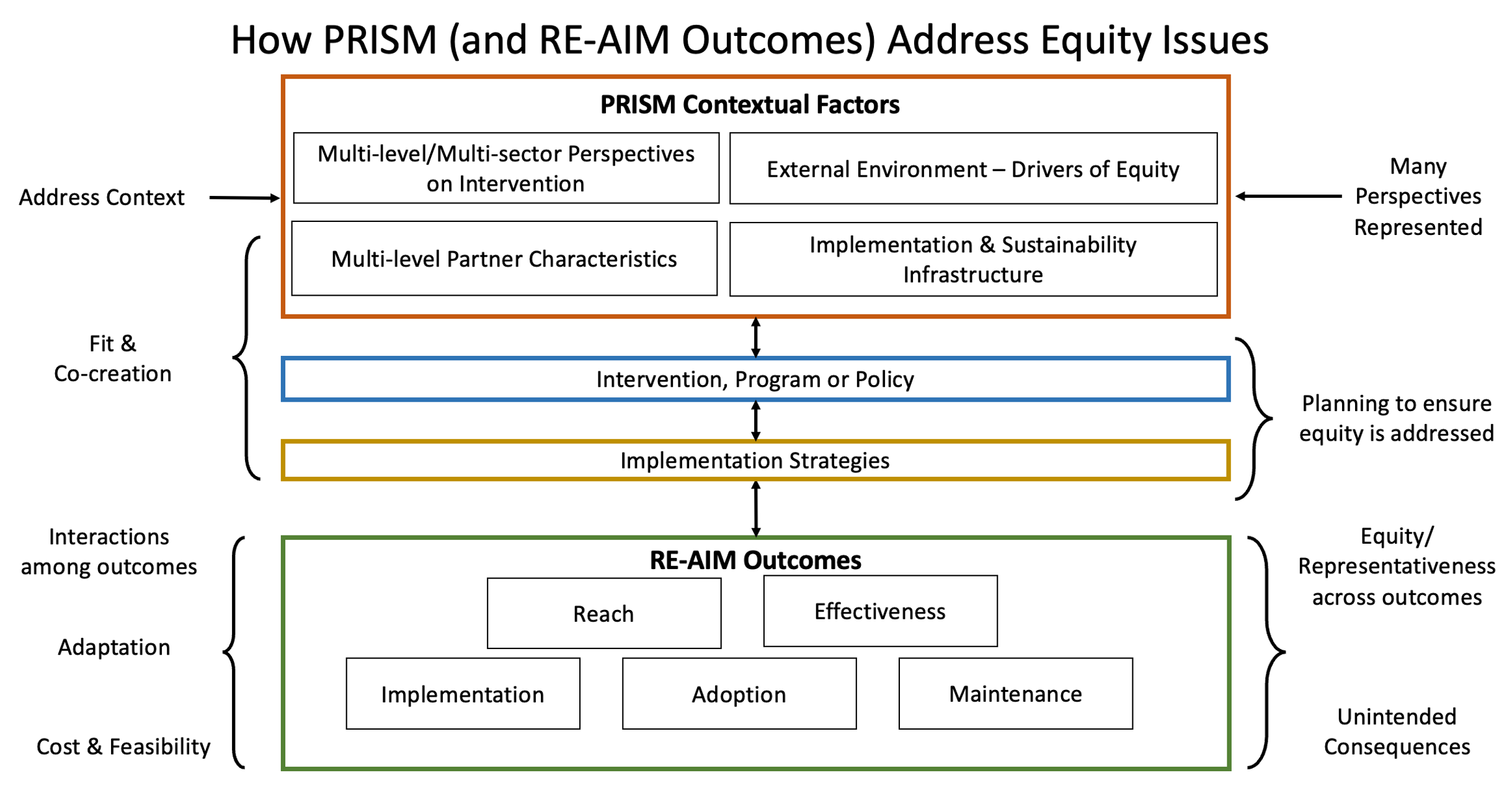What is PRISM and the iPRISM Webtool?
The Practical, Robust Implementation and Sustainability Model (PRISM) is an implementation science framework that considers the multilevel and dynamic interactions between the evidence-based intervention, the perspective and characteristics of diverse recipients (e.g., patients, clinicians, decision makers), the implementation and sustainability infrastructure, and the external environment (e.g., laws and regulations, clinical practice guidelines).
PRISM connects these contextual domains with the widely used RE-AIM (Reach, Effectiveness, Adoption, Implementation, Maintenance) outcomes.
The interactive iPRISM Webtool guides users to pragmatically and iteratively assess the alignment of the context of an evidence-based program using the PRISM contextual domains and the RE-AIM outcomes.
Why should you use the iPRISM Webtool?
The iPRISM Webtool facilitates the reach, adoption, implementation, effectiveness, and sustainability of your evidence-based program by helping to align your program and implementation strategies with your context while considering your key priorities and goals.
Who should use the iPRISM Webtool?
The tool can be used by researchers or practice-based implementers with or without expertise in implementation science.
When should you use the iPRISM Webtool?
The tool can be used to inform the planning, implementation and evaluation, or sustainment stages of an evidence-based program.
How should you use the iPRISM Webtool?
The tool can be used by individuals or by implementation teams. Members of teams may decide to complete the iPRISM Webtool together or individually and then compare results as a team.
How does the iPRISM Webtool address equity and representativeness?
The iPRISM Webtool explicitly nudges/guides users to consider equity and representativeness in two key ways:
- When answering the two sets of assessment questions
- When rating the potential implementation strategies to enhance a program fit for equitable impact
The two sets of assessment questions are based on the PRISM context domains and RE-AIM outcomes of the PRISM framework, which promotes and considers equity as illustrated in the figure below. The PRISM context domains emphasize the importance of representation across many perspectives when assessing context and aligning or adapting a program to fit within the context. The RE-AIM outcomes emphasize the importance of ensuring outcomes are relevant and equitable across diverse perspectives and include proactive monitoring for potential unintended inequities.


